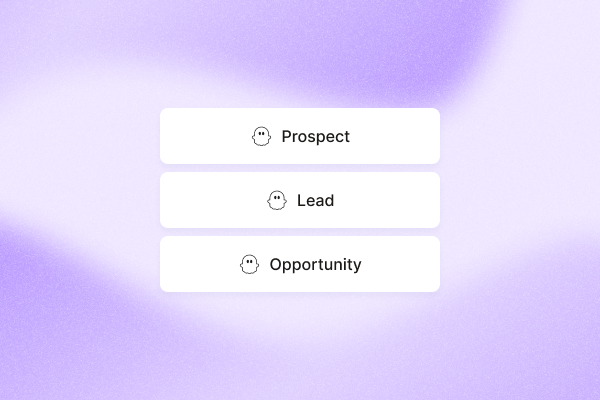Figuring out the difference between leads, prospects, and sales opportunities doesn’t just clear up the confusion—it helps you focus your time and energy where it matters most.
Each represents a step in the sales funnel, and understanding how they fit into the lead generation process gives you a solid strategy for turning interest into revenue.
In this guide, we’ll show you what sets them apart.
TL;DR
- A lead is an unqualified contact who has entered your database through marketing or sales efforts, typically at the early stages of the sales funnel.
- A prospect is a qualified lead who fits your ideal customer profile and has the potential to become a paying customer.
- A sales opportunity is a qualified prospect that shows strong potential to make a purchase and is on the path to closing the deal.
- The main differences between a lead, a prospect, and an opportunity come down to:
- Stage in the sales funnel: Leads are at the top, prospects move to the middle as they evaluate their options, and opportunities are at the bottom, ready to close.
- Level of interest: Leads may show general curiosity, prospects have identified a clear need, and opportunities show intent to buy.
- Qualification stage: Leads are unvetted, prospects meet key criteria like company type and size, and opportunities are fully qualified for sales discussions.
- Goal: Leads need nurturing to move forward, prospects require conversations about their specific needs, and opportunities need tailored conversations and proposals to seal the deal.
- Qualifying leads into prospects and opportunities helps sales teams focus on high-priority contacts, maintains an organized pipeline, and increases win rates through tailored communication.
- To qualify leads and prospects, get to know them with enrichment tools, prioritize them using a lead-scoring system, personalize messages with AI tools, and nurture prospects who aren’t ready to buy.
- To identify sales opportunities, start with direct sales calls to uncover details like budget and urgency, track intent signals such as job changes, and update your CRM regularly.
- Once you’ve identified sales opportunities, qualify them by focusing on three key areas: pain points, interest, and fit.
What is a lead?
A sales lead is someone who has entered your contacts database but hasn’t been qualified yet.
Maybe they signed up for your newsletter, downloaded a free guide, or filled out a form on your website.
They’re in the initial stage of the sales pipeline. So, once you generate leads, it is essential to keep them engaged.
By nurturing leads—sharing helpful content or answering questions—your sales team can guide them through the sales funnel and prepare them to become prospects.
What is a prospect?
A prospect is a lead who fits your ideal customer profile. They fit your business’s criteria, including company type, size, needs, and decision-making power.
Sales prospects are more than just interested—they’re the prospective customers most likely to become paying customers. They are the foundation of your sales pipeline.
You identify prospects through a lead qualification process, asking the right questions and focusing on those who align with your product or service.
What is a sales opportunity?
A sales opportunity is a prospect with a clear potential to become a paying customer.
At this stage, the person has shown genuine interest in your product or service and meets all the qualified prospect criteria.
Sales opportunities typically emerge after meaningful conversations or interactions, during which you’ve identified their specific needs and confirmed that your solution fits.
From here, the focus shifts to closing the deal, turning sales opportunities into valuable customers.
Lead vs. prospect vs. opportunity: Main differences
Think of leads, prospects, and opportunities as steps in a ladder. Each step gets you closer to closing a deal, but they all require different approaches.
Understanding these differences helps you focus on what matters most and not waste time chasing the wrong people.
Here’s a quick breakdown of prospect vs. lead vs. opportunity:
| Feature | Lead | Prospect | Sales Opportunity |
| Definition | A contact who has entered your database through marketing or sales efforts. | A qualified lead who fits your ideal customer profile. | A qualified prospect ready to seriously consider buying from you. |
| Stage in the sales funnel | Top of the funnel, early awareness. | Middle of the funnel, actively evaluating. | Bottom of the funnel, ready to commit. |
| Level of interest | General curiosity or interest, or none at all. | Specific need or problem to solve. | Real intent to purchase your solution. |
| Qualification stage | No real vetting yet. | Assessed for fit (e.g., budget, need, etc.). | Fully vetted and ready for sales conversations. |
| Goal | To nurture and qualify for the next step. | To persuade and convert into an opportunity. | To close the deal and turn them into a customer. |
| Next step | Share educational content or resources. | Start a conversation about their specific needs. | Present a tailored offer or proposal. |
Knowing the difference helps you work smarter. Leads need education, prospects need personalized attention, and opportunities need action.
It’s all about meeting people where they are in the sales process and guiding them to the next step.
Why sales teams should qualify leads into prospects and opportunities
Leads, prospects, and opportunities represent distinct stages in the sales funnel, each requiring a specific approach.
Qualifying contacts lets your sales team focus on high-potential leads and prospects and use time effectively.
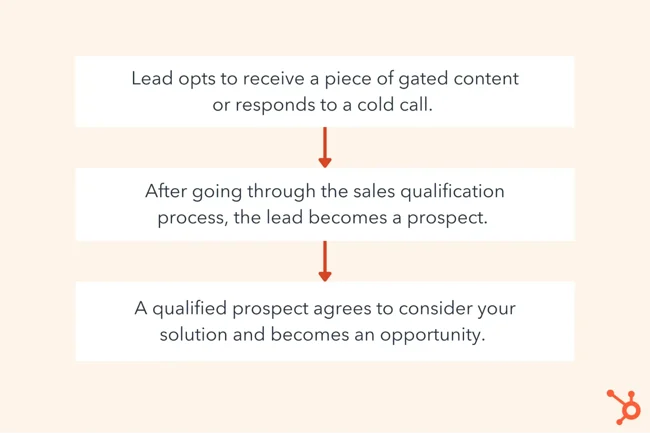
Here’s why this process is essential:
- Focus on high-priority contacts: Direct your attention to those most likely to convert instead of spreading resources too thin.
- Maintain an organized sales pipeline: Move leads through the funnel efficiently by addressing their unique needs at each stage.
- Deliver tailored communication: Align your messaging to match where each contact stands in their decision-making process.
- Increase win rates: Concentrate on strong opportunities to close deals faster and improve overall performance.
How to qualify leads to identify prospects
To turn leads into sales prospects, you must clearly understand their needs and whether they align with your company’s ideal customer profile.
When you qualify leads, you focus your time and efforts on those who are more likely to convert.
Step 1: Get to know your leads using enrichment tools
The first step is to gather more details about leads who have entered your contacts database or shown initial interest in your company’s offerings.
A simple email or name won’t tell you enough—you need to understand their role, company, and specific challenges.
Enrichment tools like the LinkedIn Profile Scraper make this process faster.
It pulls data from LinkedIn profiles—like job title, company, and emails—so you can enrich your customer relationship management software without hours of manual work.
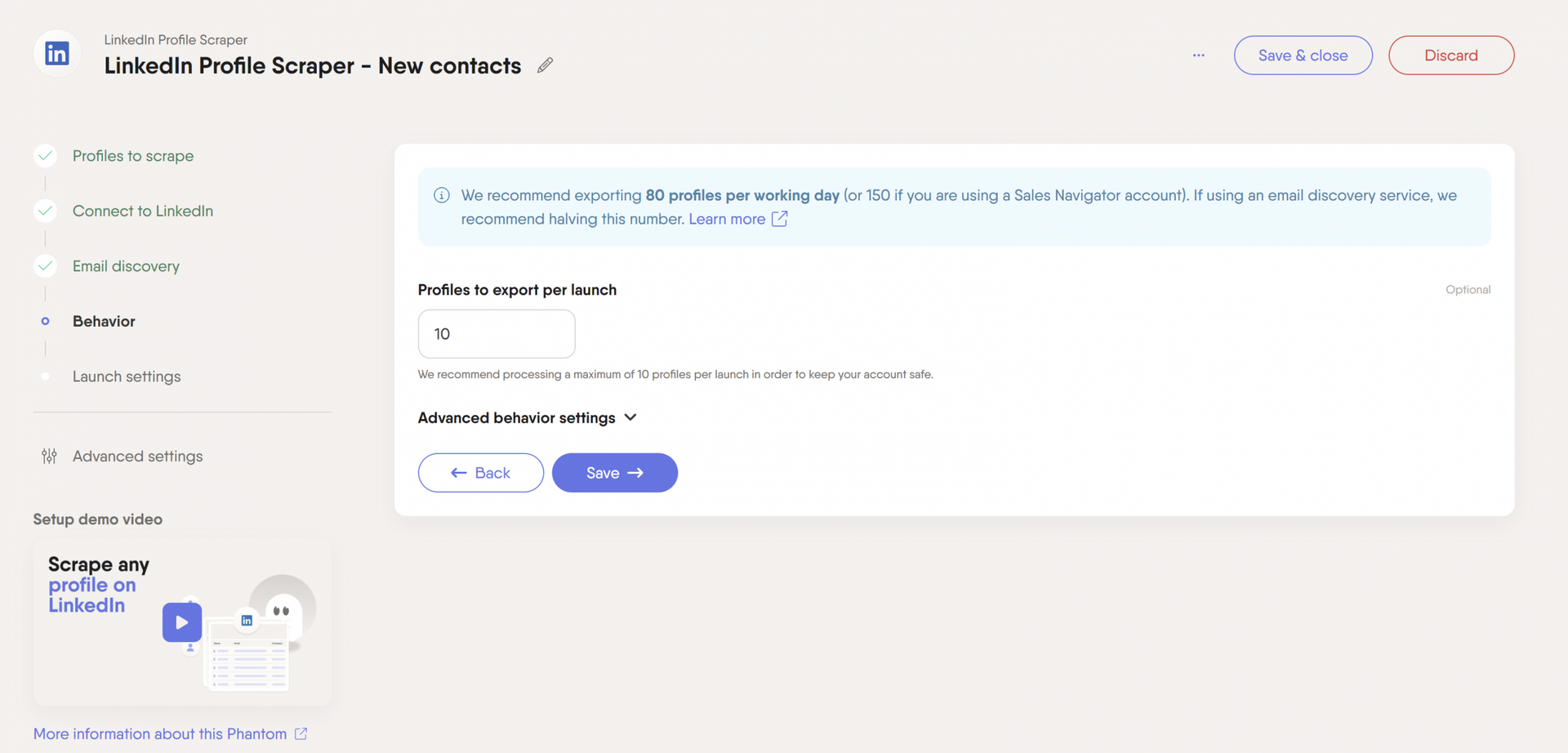
This way, you build a list of qualified leads that align with your goals.
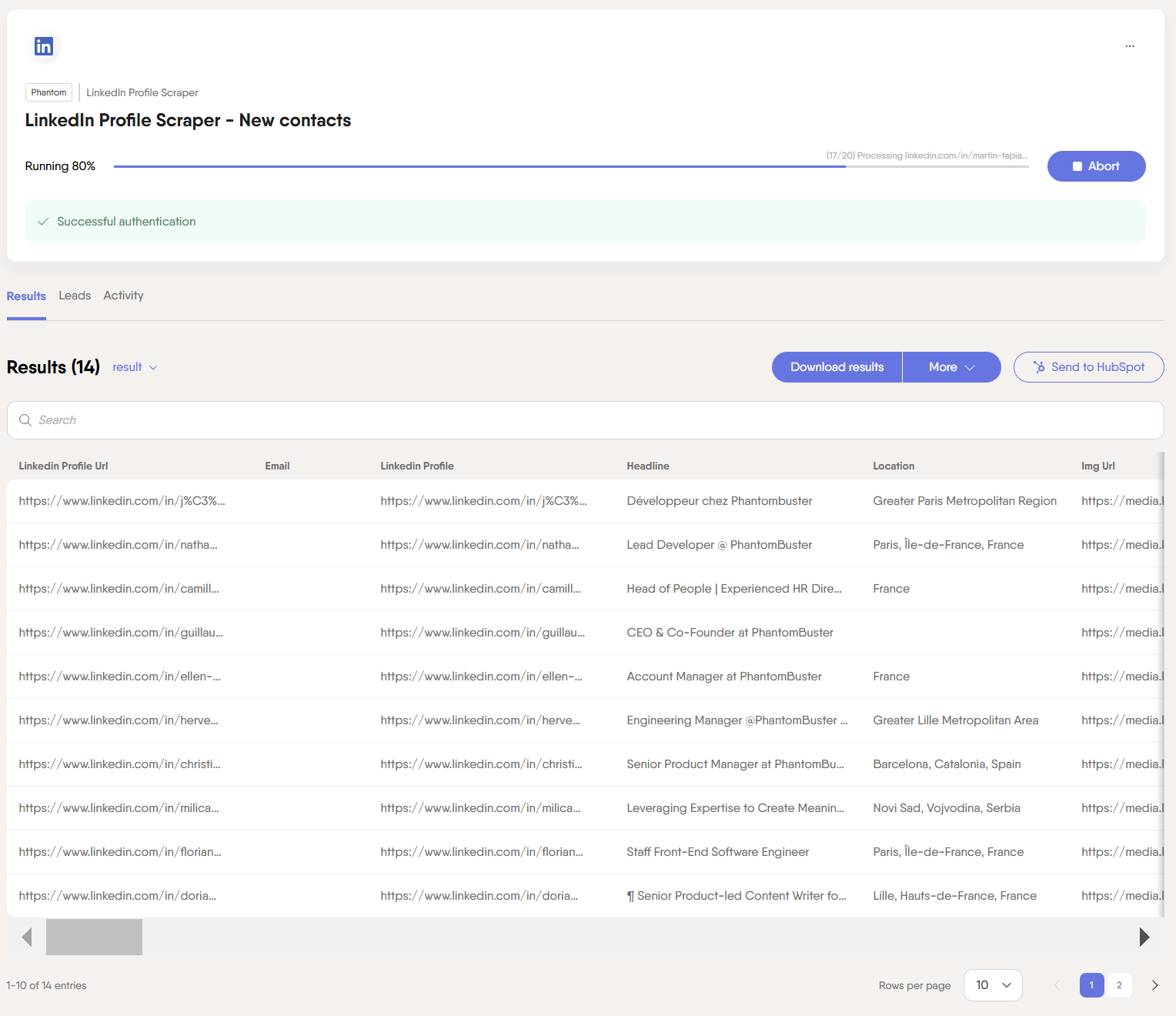
Step 2: Prioritize your leads with a lead-scoring system
Lead scoring helps you determine which leads are worth focusing on. It assigns a score to each lead based on their actions and details, such as having a decision-making role or even their activity on social media platforms.
A higher score means a lead is a better match for your product and is more likely to buy.
This lets you spend less time guessing and more time closing deals.
AI tools like the AI LinkedIn Profile Enricher make this process simple by automatically scoring your leads based on your preferences.
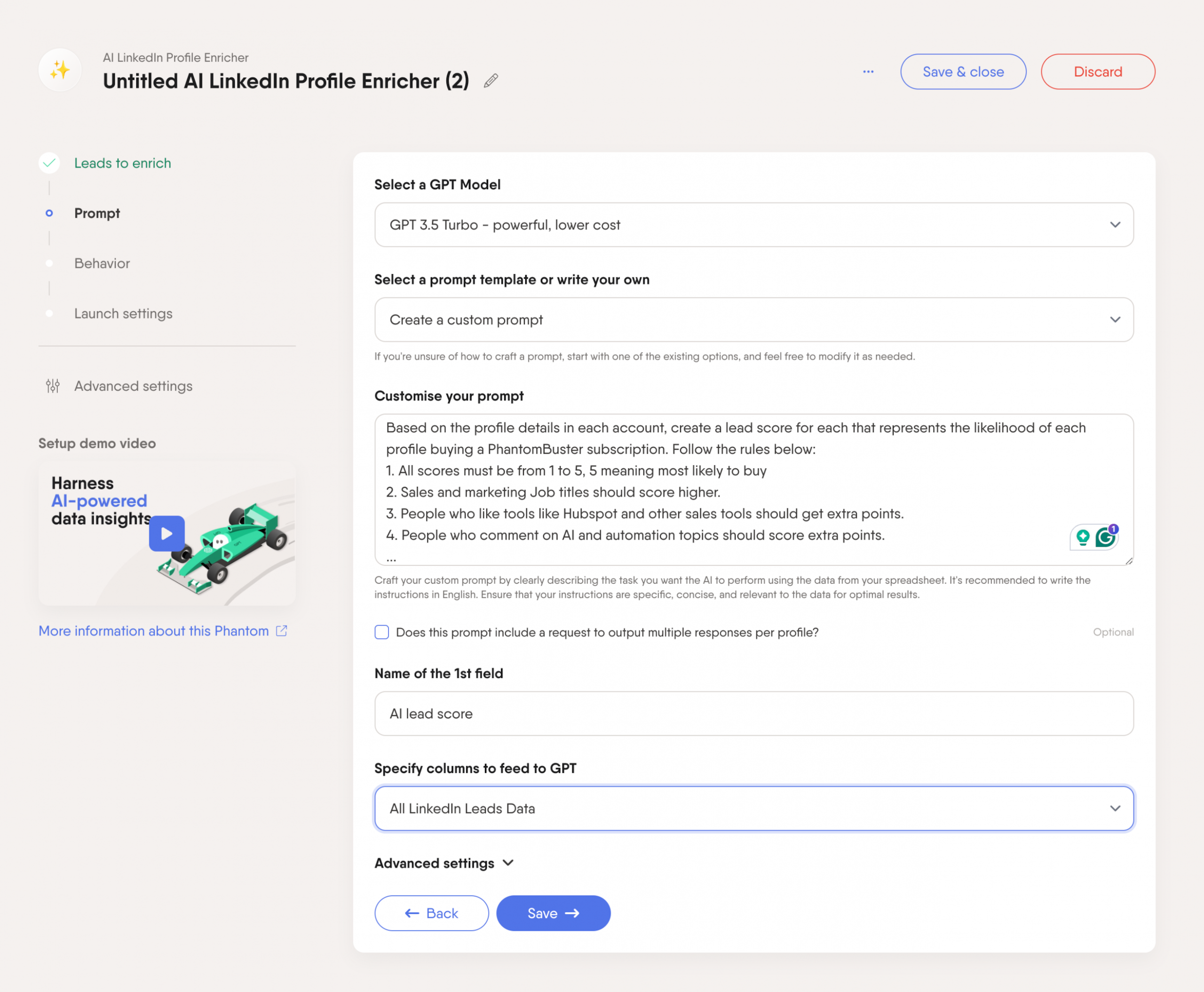
Instead of manually sorting through leads, the tool sets up your lead scoring model and lets you know exactly who to prioritize.
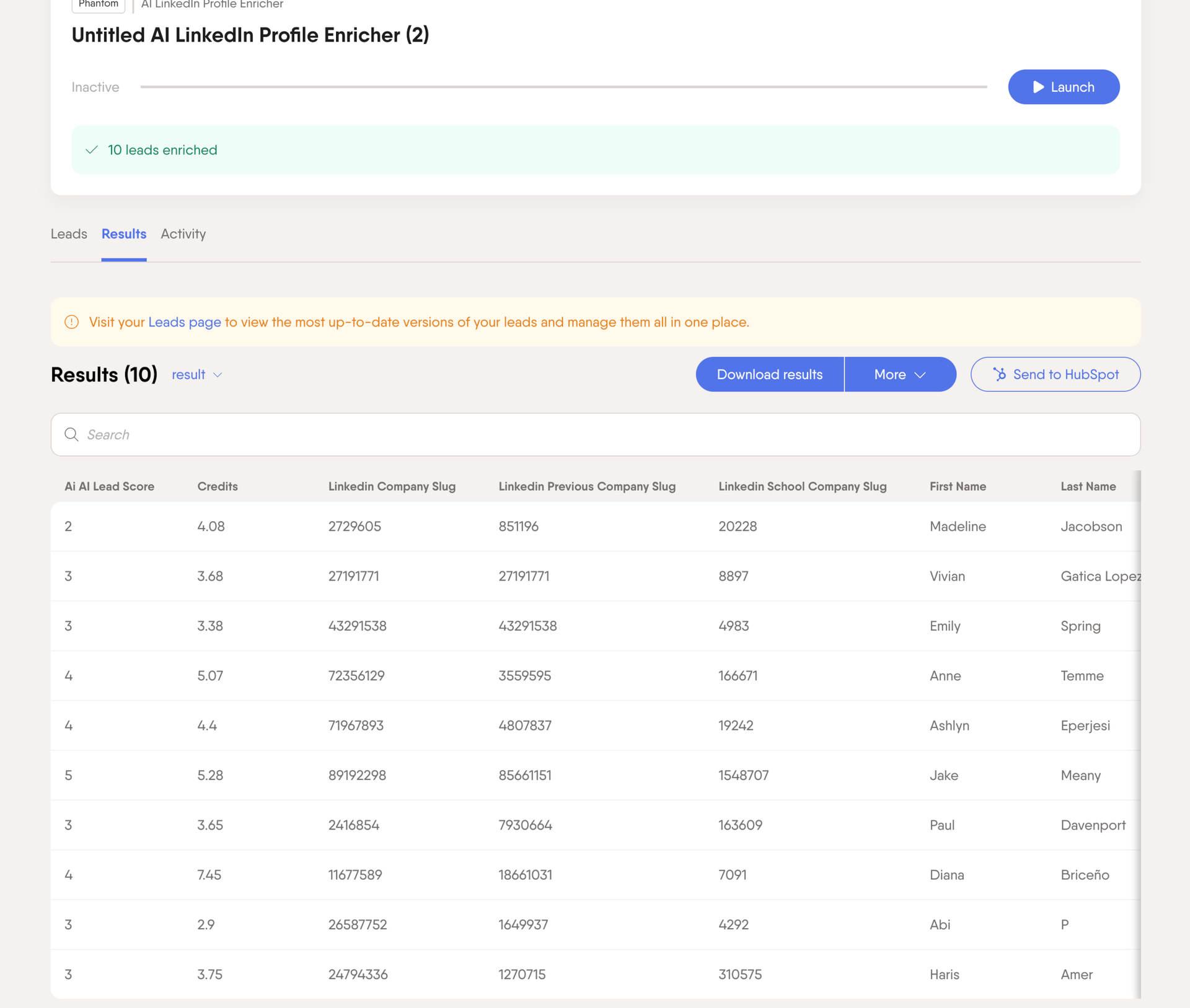
Step 3: Personalize your messages using AI
Personalizing messages based on customer data is key to boosting engagement and results.
It increases relevance, improves customer experiences, and boosts conversions.
To make your personalized messaging work, break down your audience into smaller groups, reach out at the right moment with insights based on intent data, and add a personal touch with dynamic details.
For example, the AI LinkedIn Message Writer uses lead-specific details, such as job titles or industries, to craft messages that feel genuine and stand out in busy inboxes.
You can use a custom or predefined prompt to create personalized LinkedIn messages that bring results.

You’ll get specific messages for each potential customer on your list, which you can use to launch your outreach sequences.
Step 4: Use lead nurturing for prospects who are not ready to buy
Some prospects need more time before they’re ready to make a decision.
Instead of pushing for a sale, focus on building a business relationship and offering value. Share resources like eBooks, case studies, or industry insights that help solve their problems or address pain points.
For example, if a prospect struggles with managing team workflows, send them a case study showing how your solution improved efficiency for a similar client.
This strategy keeps you on their radar while positioning your product as the answer to their challenges.
The goal is to guide them toward a purchase naturally. When the timing feels right, they’ll think of your business first.
How to identify sales opportunities
Turning sales-qualified leads into sales opportunities means moving them closer to a deal. But how do you pinpoint when potential customers are ready to take that step?
Sales opportunities go beyond interest—they show clear signs of intent and fit your product or service.
Below, we’ll explore three effective ways to uncover opportunities.
Identify opportunities using sales calls
Lead scoring is the main qualification process for prospects. But for sales opportunities, you often need a call to find out their budget, how urgent the need is, and whether your solution fits.
Sales calls provide a direct way to qualify opportunities, so remember to include them in your sales cadences.
For example, asking questions about their challenges or priorities can highlight whether they’re ready to move forward or need more nurturing.
Identify sales opportunities by tracking intent signals
Intent signals, such as a job change, can reveal when a prospect is closer to purchasing.
For instance, decision-makers who recently switched roles might need to update tools or services, making them a strong opportunity.
Using tools like PhantomBuster’s HubSpot Contact Career Tracker, you can monitor job changes automatically. This keeps you in the loop and helps you act quickly on career changes.
![]()
Getting in touch when prospects need it helps you improve your sales process.
Regularly update your CRM to track sales opportunities
Keeping your CRM up-to-date is not a one-and-done task—it’s an ongoing task that improves your sales pipeline health, keeping it fresh and actionable.
Dirty data, such as outdated or incomplete information, can create gaps in lead scoring, intent tracking, and opportunity identification.
Regular updates help you catch important changes, like updated contact details or shifts in job roles, which can uncover new opportunities.
Tools like PhantomBuster’s HubSpot Contact Data Refresher automate these updates, saving time while maintaining data accuracy.
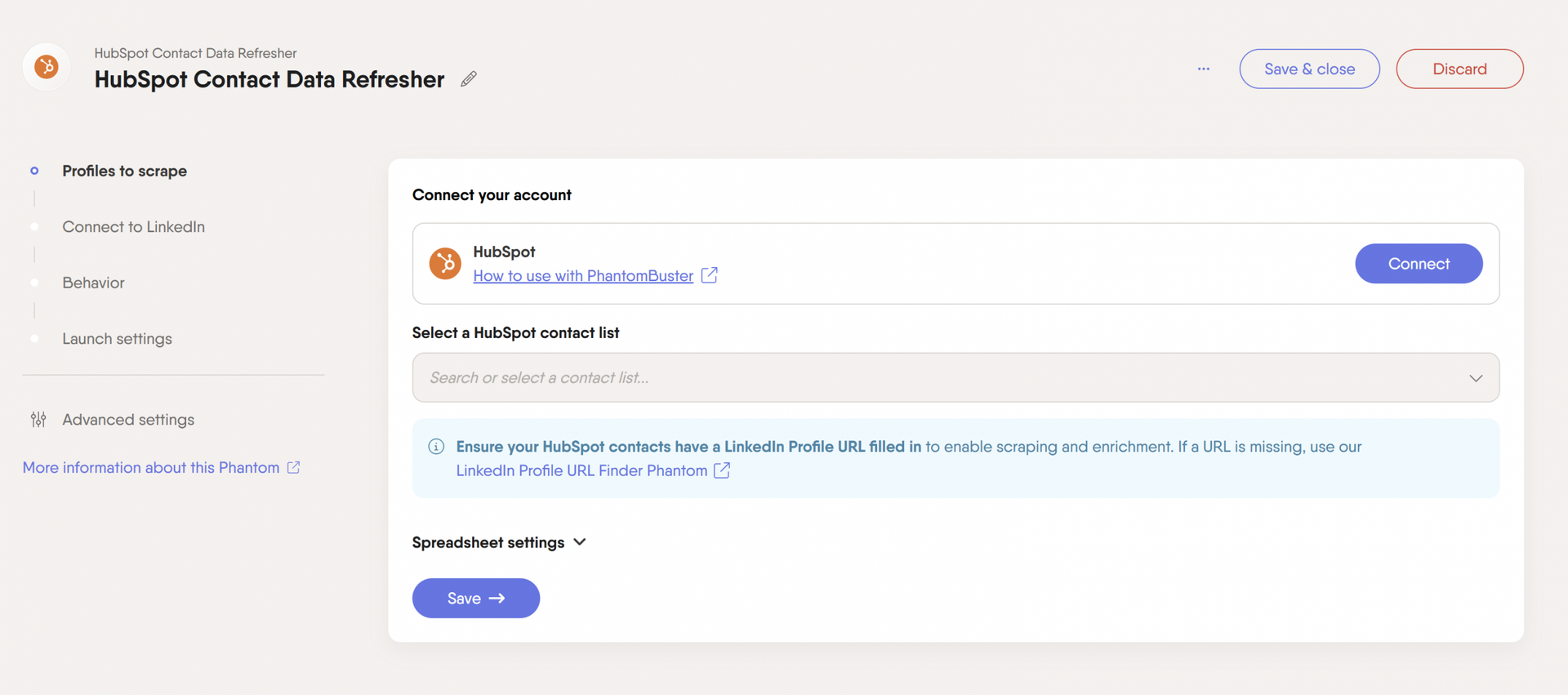
Sales opportunities qualification points
Not every lead or prospect becomes a sales opportunity.
To qualify the right ones, focus on three key areas: pain points, interest, and fit. These criteria guarantee you spend time on leads with the highest potential to close.
Below, we break down what to look for and how to effectively uncover these signals.
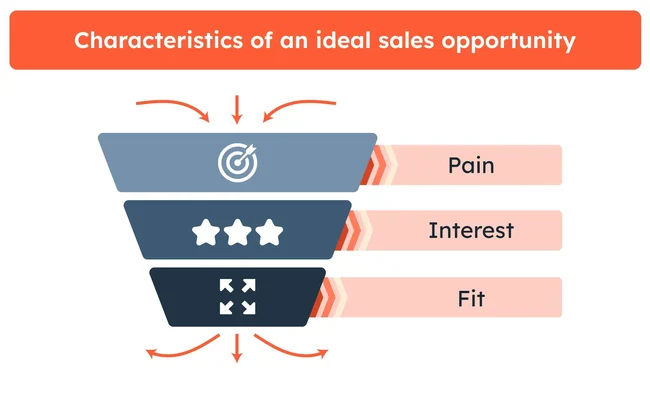
1. Pain points
Every sales opportunity starts with a problem your solution can solve. The challenge is that prospects don’t always spell out their issues, so you must look for clues.
Pay attention to how they came to you. Did they download a report or attend a LinkedIn event? Use that insight to ask focused questions, like, “What’s the biggest obstacle you’re trying to overcome right now?”
For example, if a prospect downloaded a guide on cutting manual tasks, they’re likely struggling with inefficiencies. Tailor your sales script to show exactly how you can solve that specific problem.
2. Interest
A clear pain point isn’t enough—your potential customers need to care about solving it. Sometimes, they aren’t fully aware of how their problem is holding them back.
By sharing examples and relevant data, sales reps can showcase how their product or service has helped other companies achieve better results or save time.
On the other hand, if they seem indifferent or content with workarounds, it’s best to move on.
Prioritize prospects who show genuine curiosity or urgency. These are the people who are ready to take the next step.
3. Good fit
Even if they have a problem and care about solving it, not every potential customer will be the right fit for your product or service.
Check whether their goals, budget, or company size align with your offer. For instance, an enterprise solution isn’t ideal for a small team with limited resources.
Saying no to poor-fit opportunities helps avoid bad deals and preserves your time for potential customers who match your offering.
Focusing on the right prospects builds trust, strengthens your outreach, and sets you up for long-term success.
Conclusion
Knowing the difference between leads, prospects, and opportunities puts you in control of your sales pipeline and enhances your sales process.
When you define and approach each stage clearly, you’ll keep your pipeline flowing and close deals with less guesswork.
Try PhantomBuster with a 14-day free trial to improve your sales strategy and close more deals!
